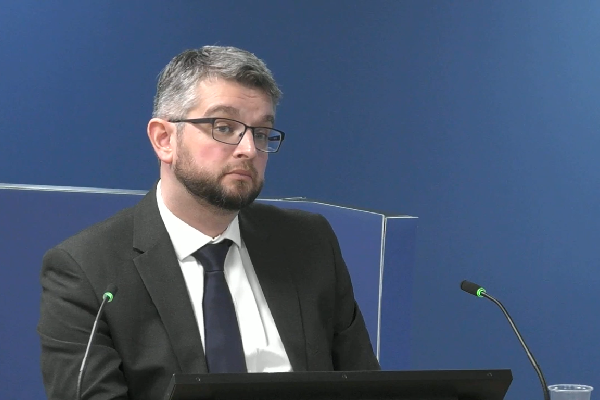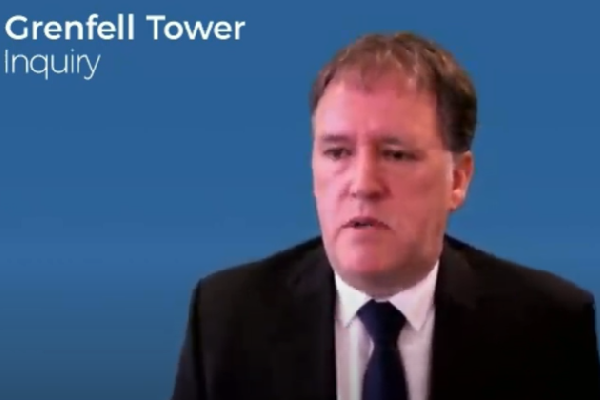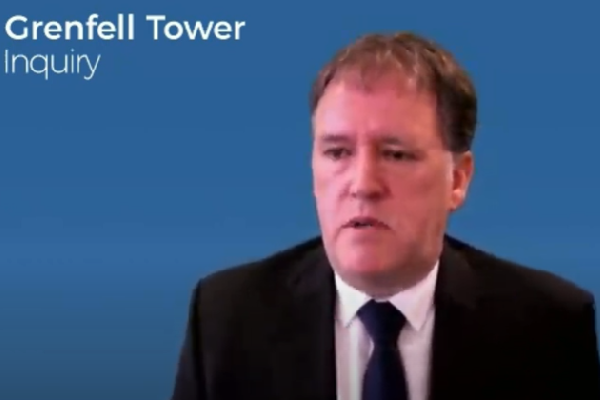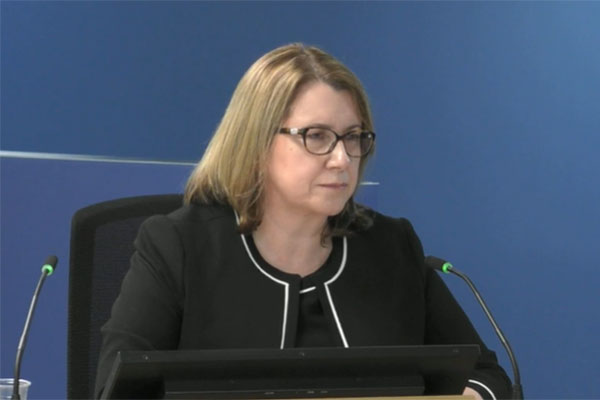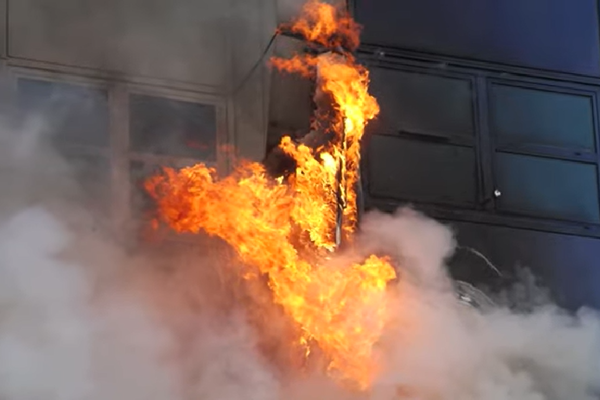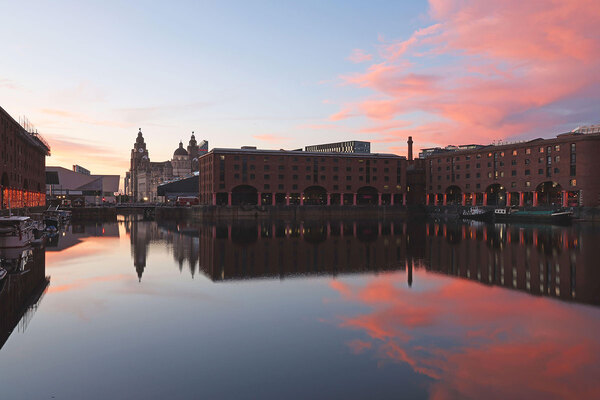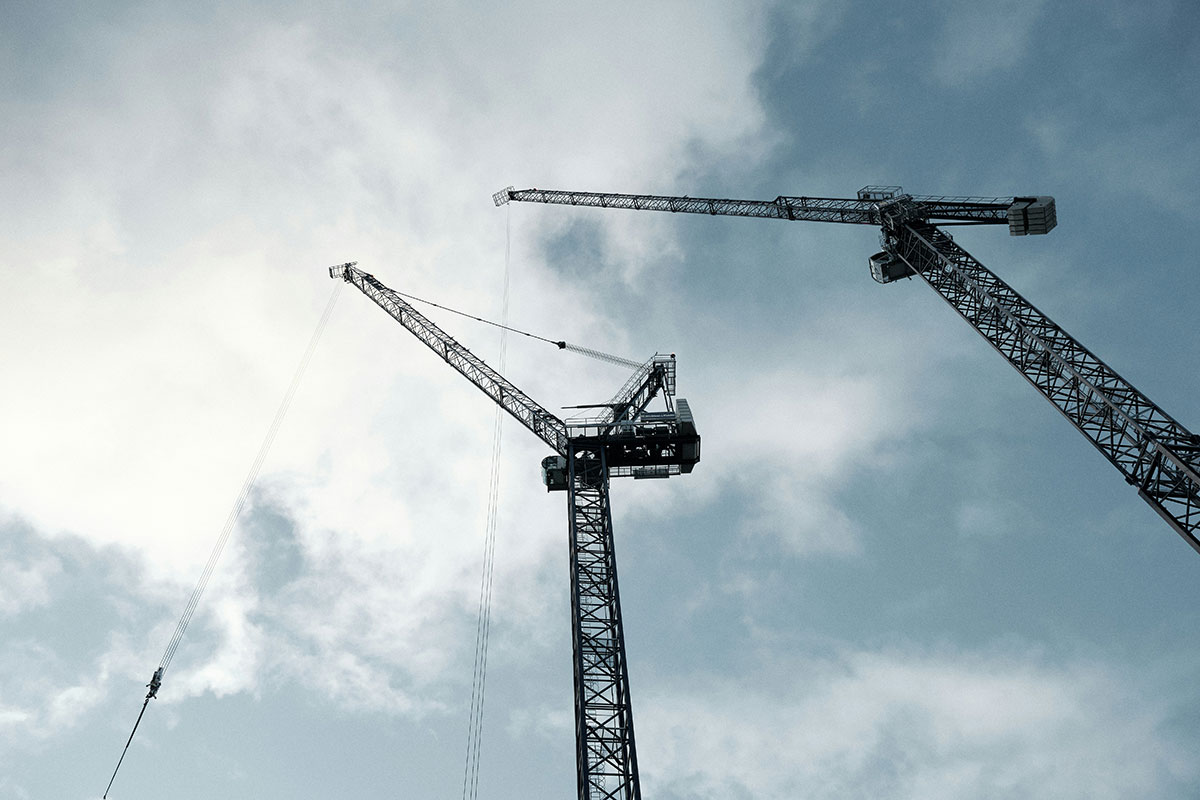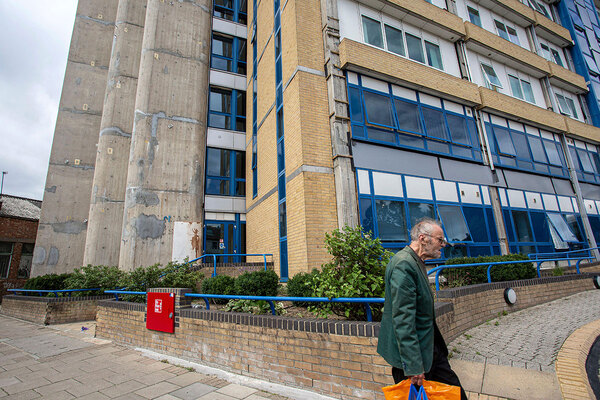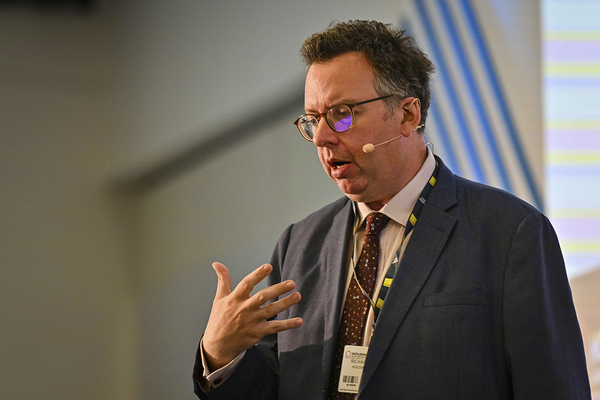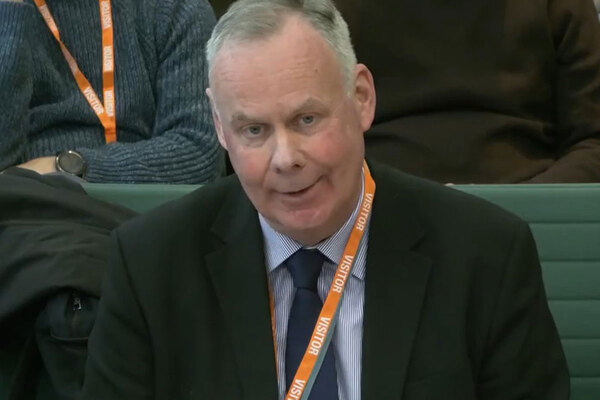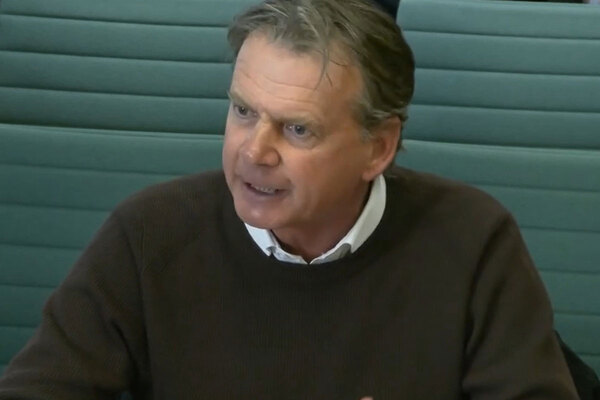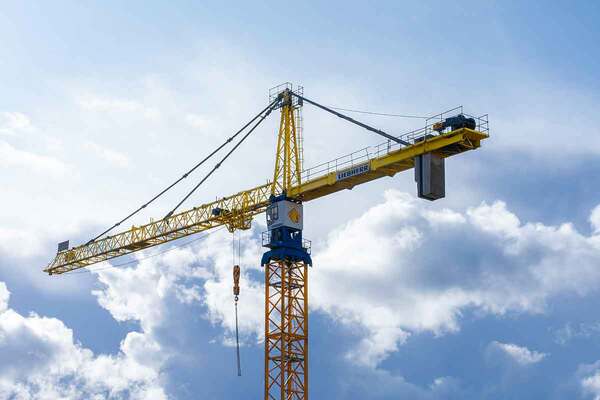Government contractually prohibited fire investigation group from recommending policy changes
The government “hobbled” a group it appointed to identify any gaps in regulations revealed by real world fires by contractually prohibting them from recommending any actual changes to regulations, the Grenfell Tower Inquiry heard today.
Trigger warning: there is a picture of cladding burning in a tower block fire later in this article
Dr David Crowder, the former head of fire investigation at the Building Research Establishment (BRE), today accepted that the ‘investigation of real fires project’, which he worked on from 2006 and led from 2015, was “flawed in a number of ways”.
He said he believed the restriction on recommending policy changes, introduced in October 2012, was a result of the government’s desire not to introduce new regulation and came about due to unhappiness about prior recommendations.
He also accepted the investigation team had cut and pasted the same statement endorsing current guidance into every year-end report it produced for 14 years - starting long before they were contractually required to refrain from suggesting changes.
During his evidence, he also said the project was “cut to the bone” due to funding limitations and accepted it failed to flag up two fires involving aluminium composite material (ACM) cladding in the years before Grenfell.
The project, which had run since 1988 and continues today, was initially intended to identify whether actual fires revealed flaws in the regulations or official guidance.
In October 2012, the government renewed the BRE’s contract to undertake the work but specified that their reports should “not contain any policy recommendations” or recommend changes to official guidance. Such recommendations could only be made at the direct request of government.
“The department wanted strict control effectively of whether it needed to respond to any policy recommendations,” said Mr Crowder.
He said he believed there had been “a suggestion made in a report prior to this contract which caused some unease or unhappiness” in the department then known as the Department for Communities and Local Government (DCLG).
“I suspected at the time that this came after the the general move towards deregulation, so regulation was not welcome,” said Mr Crowder.
“Did anyone think ‘how am I going to monitor the effectiveness of the regulations and guidance without being able to point out any parts found to be ineffective’?” asked counsel to the inquiry Kate Grange QC.
Mr Crowder said the BRE did try to “tease out” issues by summarising “implications” even though recommendations were not allowed.
He agreed that he felt “hobbled” by this restriction, and added: “It was part of… the atmosphere, if you like, around fire safety and the building regulations was going at that time.”
The inquiry saw that year end reports from 2001 to 2015 all concluded by saying the findings “reaffirmed the overall effectiveness of the building regulations and Approved Document B”.
“So, long before there was this change in October 2012 which prevented the BRE from making any policy recommendations, for year after year after year the report was producing the same conclusion with the same wording, yes?” asked Ms Grange.
“Yes,” replied Mr Crowder.
“Do you think it’s right that in fact, over that 14 year period, the findings from these investigations, covering hundreds and hundreds and hundreds of fires, actually reaffirm the overall effectiveness of the Building Regulations and Approved Document B and providing for life safety? Do you think that’s likely to be correct?” said Ms Grange.
He said that none of the fires investigated had demonstrated “a fundamental need to go back to the drawing board”, and more minor recommendations had been made in separate reports.
The inquiry looked in particular at the team’s work investigating two fires - Sudbury House in Wandsworth, south London in August 2010 and Taplow House in Camden, north London in January 2012.
Both of these buildings contained ACM cladding, and images released by the inquiry today show damage to the cladding during the fire.
At Sudbury in particular, a YouTube video of still images posted shortly after the fire shows flames taking hold on a column of ACM panels and beginning to spread up and down the building (below). However, the fire was within the range of firefighters hoses and they managed to extinguish it without further spread.
The group reported on both fires, but in neither instance did it identify the presence of ACM or include any pictures of the blazes.
“Do you accept that with hindsight… the reality is that the BRE did not conduct its initial investigation into [these] fires thoroughly enough to identify the fact that these fires had serious implications for the Building Regulations and associated guidance?” asked Ms Grange.
“I would respond that it conducted its investigation in accordance with the parameters set out and the information available. With hindsight, yes, more should have been discovered, but that is with the benefit of hindsight,” he replied.
Mr Crowder said the budget for the team was around £100,000 per year and came under pressure for further cuts during the austerity regime instituted by the coalition government after 2010.
“We are talking about the period where budgets were cut, and there were requests made for us to cut our budgets further than the figures that are already set out in my witness statement,” he said. “We were trying to do our best with what we had because the alternative wasn’t going to be more money, it was going to be let’s just cancel the contract.”
He said that he received a call suggesting a further 20% cut. “I think I laughed down the phone and said ‘you’ve cut us to the bone, you’re not getting any more out of us’,” he said.
“This project was flawed in a number of respects, wasn’t it? Do you accept that?” asked Ms Grange.
“Yes,” replied Mr Crowder.
He was shown the conclusion of an end of year report from 2017 - published a mere two months before the Grenfell Tower fire - which repeated the longstanding statement that the findings had “reaffirmed the effectiveness” of regulations.
But this report added that there were “significant issues” which related to “innovative construction products and techniques which have not yet been considered in relation to the regulations or [Approved Document B]”.
“Isn’t that conclusion… internally inconsistent , in that onthe one hand you’re saying overall the findings have reaffirmed the overall effectiveness, but then in the second part you are saying: but actually, there are some significant issues that have not yet been identified?” asked Ms Grange.
Mr Crowder said the initial statement about the effectiveness of the regulations was “not intended to indicate that everything was perfect”.
He had earlier explained that limited attention was paid to overseas fires, particularly those in the Middle East in the 2010s involving highly combustible ACM cladding, saying: “There was a belief that these fires wouldn’t occur in the UK because ACM wasn’t being installed in the UK”.
“I mean, that’s obviously wrong, but that was the view at the time,” he added.
“Did you ever do any investigations to find out whether ACM PE was in fact being put on tall buildings?” asked Ms Grange.
“No, that wouldn’t be our remit,” he replied.
Mr Crowder also referred to a fire in a timber frame building, Bennett Close in Houslow, west London, in 2008. “What happened was there was a central staircase and that happened to be the first thing to collapse, and in very short order, during the fire,” he said.
“That was a big deal because, had people not been evacuated by the incident commander, they would have been left stranded in flats with a central staircase that had collapsed.”
Mr Crowder left the BRE in 2019 to take up a role as partner at his consultancy DCCH Experts LLP.
The inquiry continues with further evidence from Mr Crowder tomorrow, where he will discuss his investigation into the fatal Lakanal House fire in 2009.
The video of images from the Sudbury House incident:
Sign up for our weekly Grenfell Inquiry newsletter
Each week we send out a newsletter rounding up the key news from the Grenfell Inquiry, along with the headlines from the week
Already have an account? Click here to manage your newsletters
